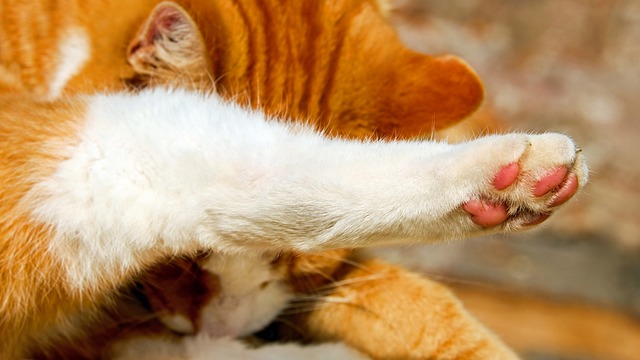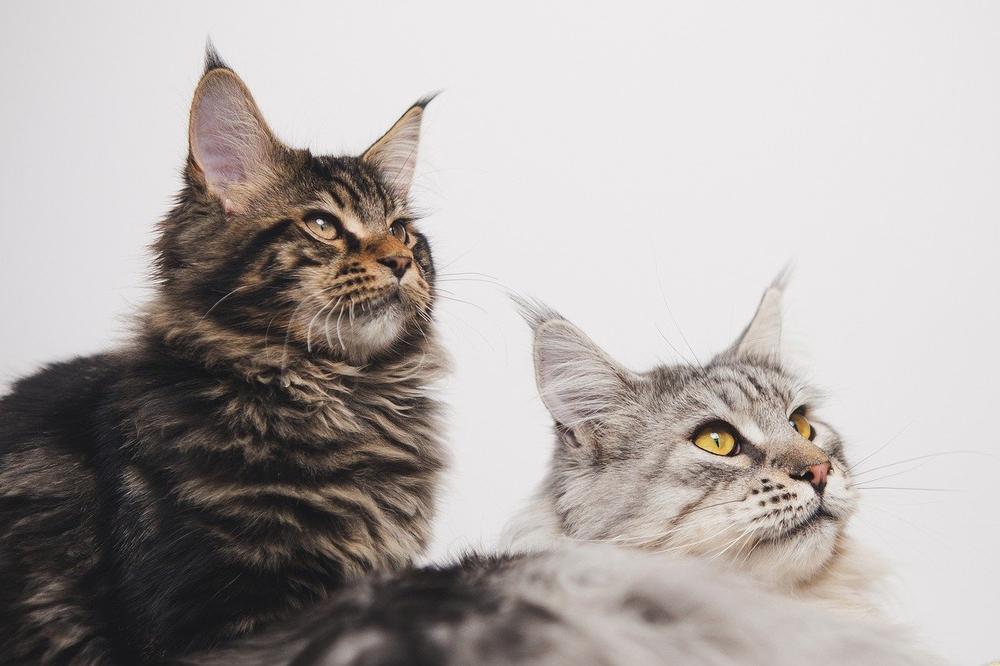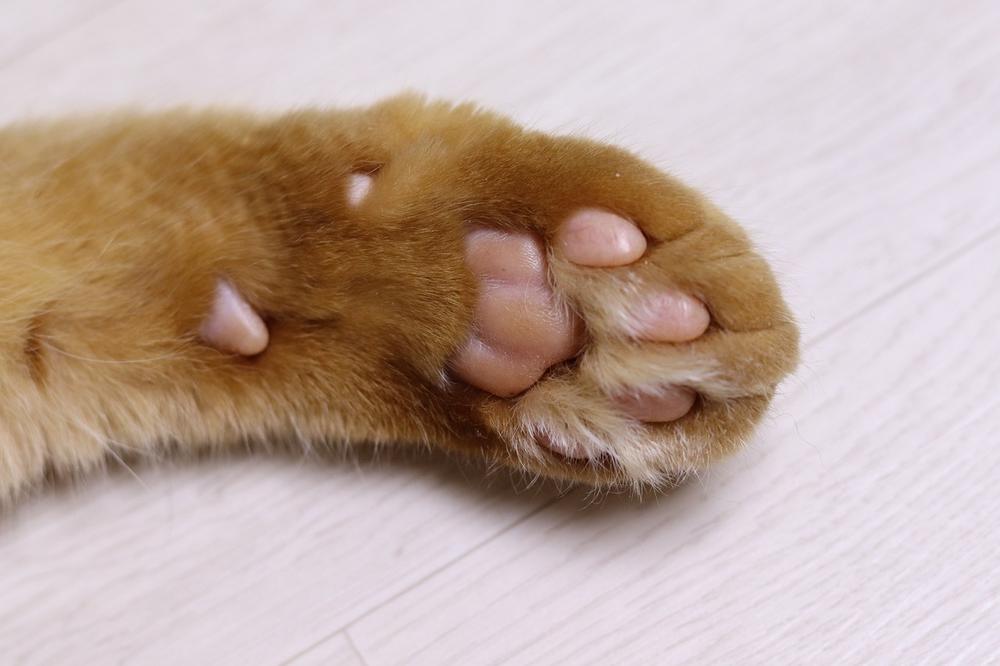Do Cats Have a Dominant Paw?

Curious if your feline friend has a dominant paw?
Wondering what it says about their mysterious behavior?
You're not alone, my friend. 😺
Let's embark on a journey of feline discovery together.
Buckle up, because we're about to dive into the captivating world of paw preference.
Can You Determine a Cat's Dominant Paw?
Do you ever wonder if your cat has a dominant paw?
Well, the answer is yeah.
Figuring out which paw your cat favors can be pretty interesting, and I'm here to help you with that.
Check this out, here are some practical ways for you to figure it all out:
- Pay attention to how your cat plays. Watch closely as they grab or bat at toys. Do they use one paw more often? Keep an eye on their movements.
- Take note of their scratching habits. When they scratch on things like posts or furniture, which paw do they usually use?
- Look out for grooming clues. Cats tend to use their dominant paw for cleaning themselves. See which paw they consistently use for this purpose.
- Let's do a treat experiment. Hold a treat above your cat's head and see which paw they raise to snatch it. This can give you an idea of their preferred paw.
You'll quickly determine if your cat is predominantly left-pawed or right-pawed by observing these signals.
Now, you might think it's just a minor detail, but understanding your cat's dominant paw can actually make playtime more fun and allow you to provide activities that they'll really enjoy.

Just like us humans, cats have different dominant paws, and this unique trait adds to their individuality.
So, embrace your furry friend's paw preference and adjust their environment accordingly. 😺
Now that you know how to determine your cat's dominant paw, there's another fascinating aspect we should explore.
Did you know that age, gender, and even emotional processing can influence a cat's paw preference?
Join me as we delve into the intriguing world of paw-preference dynamics in felines.
Trust me, you won't want to miss it!
Factors That Influence Paw Preference
Paw preference in cats is influenced by age and gender. As cats grow older, a dominant paw emerges, while younger cats tend to be more ambidextrous. Male cats typically favor their left paw, while females lean toward their right paw.
Are you curious if cats have a dominant paw?
Well, let me tell you, age is a big factor in paw preference.
Younger cats tend to be more ambidextrous, but as they grow older, a dominant paw emerges.
Gender also plays a part in this fascinating phenomenon.
Studies show that male cats typically favor their left paw, while females lean toward their right paw. Isn't that interesting?
Believe it or not, about 75% of cats exhibit a clear paw preference.
This preference can actually impact their behavior and emotional processing. It's quite remarkable!
Understanding paw preference is crucial for providing the best care for our furry companions.
Cats with a strong paw preference often excel in problem-solving and dexterity.
On the flip side, cats with no paw preference may experience anxiety and stress-related behaviors. Paw preference affects more than just simple paw usage!
To determine a cat's paw preference, pay attention to specific behavioral patterns. Watch for head and ear turns, preferences for food, toys, sleep, and litter box usage.
Even actions like descending stairs and entering the litter box can give clues to paw preference.
Interestingly, studies suggest that cats with a right paw preference tend to be more confident and friendly, whereas those favoring their left paw may display more fearfulness. Your fur baby's paw preference might reveal aspects of their unique personality!
It's worth noting that left-limbed animals, including cats, might be more susceptible to stress. They may exhibit stronger fear responses, aggression, and difficulties coping with stress.
So, paw preference can even influence a cat's all in all well-being.
By understanding these factors, you'll gain a better understanding of your cats and how to care for them.
Don't you think this knowledge is essential for being a great cat owner?
But now you may be wondering, how exactly can you determine your cat's paw preference?
Well, let me show you some simple and fascinating ways that you can observe and test their dominant paw!
How to Test Your Cat's Paw Preference
Cats show their paw preference more openly than you'd expect. 🐾
You can easily figure it out by creating a playful track covered in treats on either side.
Just pay attention to which paw they use first to navigate the course.
Another way to confirm their preferred paw is to observe consistent behaviors over three months.
Take note when they climb stairs, enter the litter box, or reach for food.

Which paw do they rely on?
For an extra confirmation, you could try an experimental setup - put food inside and see which paw they use to scoop it out.
Testing your cat's paw dominance isn't just intriguing; it helps you understand them better too.
To summarize, here are the steps:
- Arrange a track with tempting treats on both sides.
- Observe their initial paw choice.
- Take notice of recurring behaviors over several months.
- Pay attention to tasks like stair climbing or entering the litter box.
- See which paw they use for food retrieval.
- Give the "forced" test a shot using an apparatus.
Through these steps, you will be able to determine if your cat favors its right paw or left paw.
And if you're wondering about the secret behind those fascinating little paws, I can let you in on a fascinating discovery.
In my blog post, I delve into the captivating realm of feline biology and answer the intriguing question: do cats have scent glands in their paws? You won't want to miss it.
Experience that "aha!" moment as you uncover the mysteries of your furry friend's paws by reading my article, aptly titled Do Cats Have Scent Glands in Their Paws.
The Science Behind Paw Preference in Cats
| Paw Preference | Characteristics |
|---|---|
| Left-pawed | Cats who predominantly use their left paw may exhibit certain personality traits such as intelligence, independence, and creativity. They are often more outgoing and adventurous. However, they may also be more susceptible to stress and anxiety. |
| Right-pawed | Cats who predominantly use their right paw may display characteristics such as being practical, logical, and cautious. They are typically more reserved and observant. These cats may handle stressful situations better and are less prone to anxiety. |
| Ambidextrous | Cats who use both paws equally may possess a balanced personality. They tend to be adaptable, flexible, and open to new experiences. They may also exhibit higher levels of curiosity and playfulness. Ambidextrous cats may have a neutral response to stress and exhibit moderate levels of anxiety. |
Cats can have different preferences when it comes to paws, and there is actually a significant amount of scientific research behind it.
According to studies, using specific paws activates different parts of a cat's brain.
It's pretty fascinating, isn't it?
In fact, the preference for a particular paw can even indicate which side of a cat's brain is more active and influence their personality traits.
For example, being left-pawed or right-pawed might suggest whether a cat is more fearful or aggressive.
Here's an interesting fact: approximately one-third of cats are left-pawed, another third are right-pawed, and the rest use both paws equally.
This difference in paw preference is linked to brain dominance and could explain why there are more left-pawed cats than left-handed humans. Amazing, right?
Studying paw preference also provides insights into how susceptible cats are to stress.
One study examining data from 44 cats found some differences in paw preference between males and females, although the reasons behind these variances remain unknown.
Scientists are delving deep into investigating paw preference to uncover why these preferences exist and what drives them in the brain.
It's not just about whether cats have a preference for a particular paw, but also understanding the underlying factors that contribute to this preference.
Interestingly, researchers have noticed that right-limbed cats, those that primarily use their right paw, rely more on the left side of their brain, which is responsible for logical processing and positive emotions. Isn't that fascinating?
So, paw preference in cats extends beyond the physical act itself.
It offers valuable insights into their personalities, susceptibility to stress, and all in all brain and body functioning.
Armed with this newfound knowledge, you can now appreciate your furry companion's dominant paw with a fresh perspective.
And here's the surprising thing...
Paw preference in cats is not solely determined by breed, but rather varies widely among individual cats regardless of their breed.
Most cats have a dominant paw, although some cats may not show a specific paw preference!
Common Myths About Cats' Dominant Paw
Cats' paw preference isn't solely based on their breed, as commonly believed.
It actually varies widely among individual cats, regardless of their breed.
While most cats do have a dominant paw, there are those that don't show a clear preference for one paw over the other.
Now, let me share with you some practical insights about cats' paw preferences:
- Training: You can train your cat to use both paws equally by incorporating toys and treats on both sides. This will help them become ambidextrous.
- Observation: Pay attention to which paw your cat favors when playing, climbing, or scratching. This can give you insights into their dominant paw.
- Preference changes: Cats' paw preference can change over time due to injuries or age-related factors. So, don't assume their paw preference will always remain the same.
- Hunting style: Some cats primarily use their dominant paw for capturing prey, while others adapt and switch it up depending on the situation. This allows them to be flexible in different hunting scenarios.
Your understanding of cats' paw preferences will enhance your bond with your feline companion and grant you a deeper comprehension of them.
Conclusion
- Cats can have a dominant paw, similar to humans' dominant hands.
- Paw preference in cats is influenced by factors such as gender.
- About 75% of cats exhibit a paw preference, which can impact their behavior and emotional processing.
- Understanding paw preference is important for providing better care for cats.
- Cats with a strong paw preference may have better problem-solving abilities and dexterity.
- Cats with no paw preference may experience anxiety and stress-related behaviors.
- Behavioral patterns can indicate a cat's paw preference.
- Right-pawed cats tend to be more confident and friendly, while left-pawed cats may be more fearful.
- Observing a cat's paw preference can be done through simple actions.
- About one-third of cats are left-pawed, one-third are right-pawed, and one-third use both paws equally.
- Paw preference indicates which side of the brain is more active.
- Paw preference can offer insights into an animal's vulnerability to stress.
- The difference in brain dominance explains why there are more left-pawed cats than left-handed humans.
- Specific reasons for gender differences in paw preference are unknown.
- Scientists study handedness to understand how these preferences evolved.
And that wraps up today's article.
If you wish to read more of my useful articles, I recommend you check out some of these: Can a Cat Ride in a Car Without a Carrier, Why Does My Cat Follow Me Everywhere, Why Does My Cat Hates Being Held, Why Is My Cat Obsessed With My Feet, and Do Cats Understand Kisses
Talk soon,
-Sarah Davis